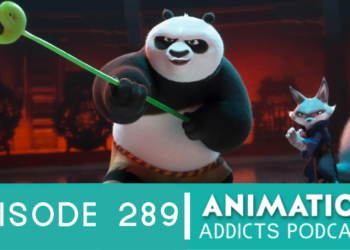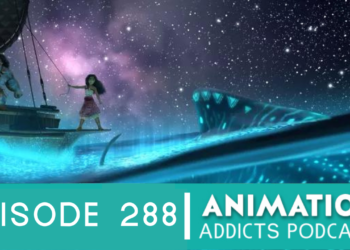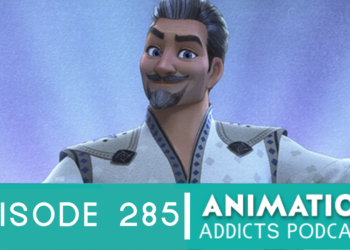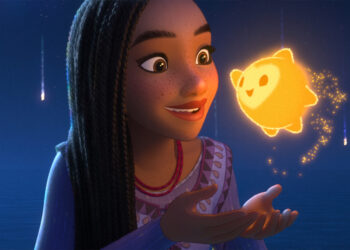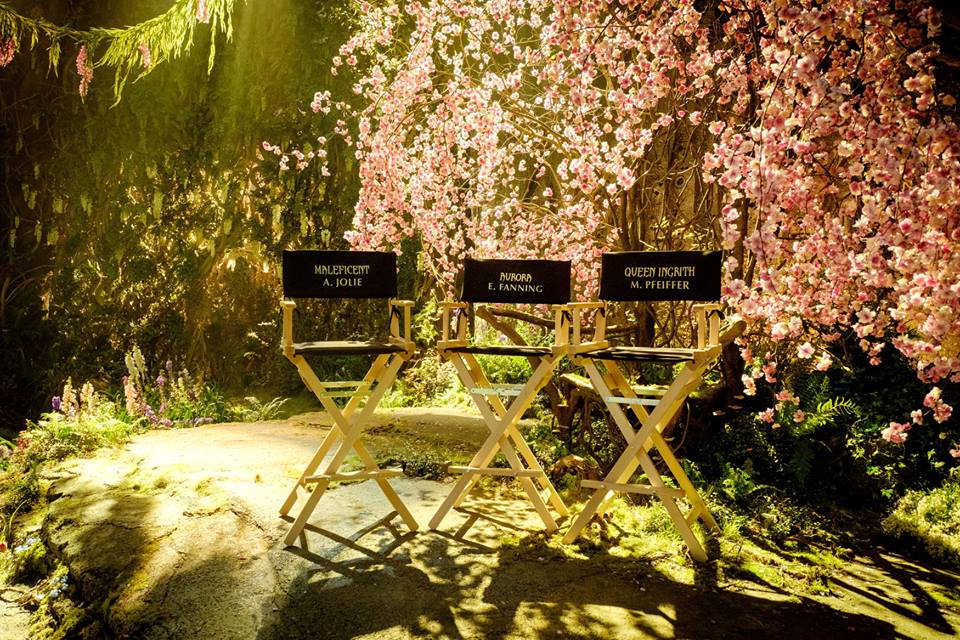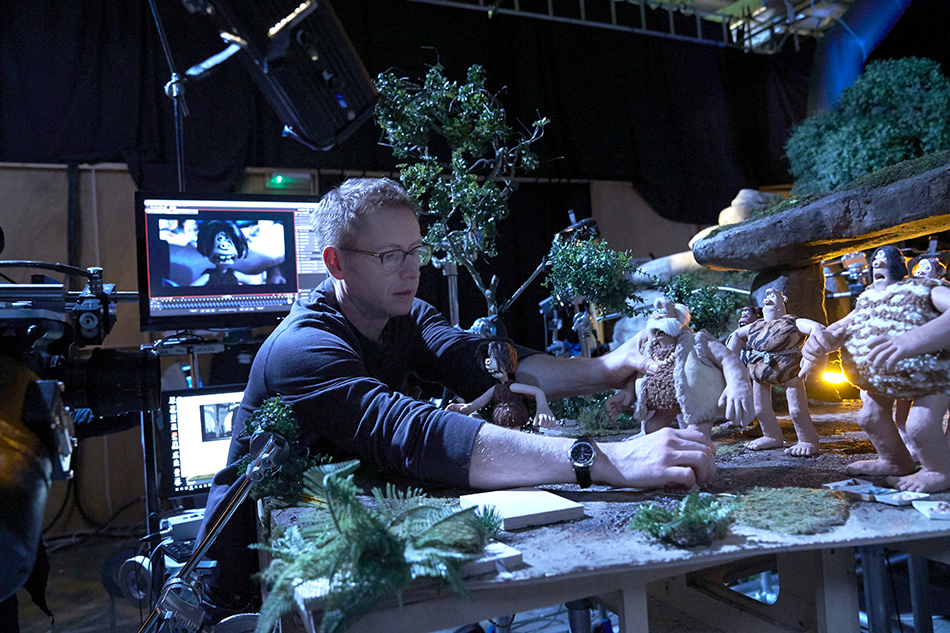
Recently I had the chance to talk with Merlin Crossingham, creative director of Wallace and Gromit and an animation director for Aardman’s latest film Early Man. It was a fascinating opportunity to learn more about Aardman and the process behind their stop motion animated classics.
Thank you so much for taking the time to talk with me. I know the readers at Rotoscopers will really enjoy getting to know you better and reading the interview.
MC: You’re welcome
Would you start by introducing yourself and telling us how you became a member of the Aardman team?
Right. My name is Merlin Crossingham. My day job at Aardman is Creative Director of Wallace and Gromit but in recent history I have been working as one of the animation directors on Nick Park’s latest movie Early Man. I have been working at Aardman for 23 years. I started as a junior animator and have sort of climbed up the ladder.
I got my first big break as a lead animator on Chicken Run and then went on to be senior animator for Wallace and Gromit: Curse of the Were Rabbit. It was on that job that Nick realized he’d bit off more than he could chew and gave me some second-unit directing responsibilities. I had never thought of being a director. So, I had a go at it, and I really enjoyed it! Since then I have sort of done less animation and more directing. I specialized in Wallace and Gromit at the time but since have directed all sorts of things – tv shows, Creature Comforts, Morph (which is our longest running character. He’s 40 years old. He’s our version of Gumby)
So, yes, having gone from scrutinizing each individual frame, I’m now a creative overseeing eye of the complete projects. .
That’s what I was going to ask you because you’ve done a number of different roles. What is the difference between say a director, animation director, a supervising animator, the different roles?
Well, I do know that each of them is interpreted differently in each studio. So, the way we do it at Aardman really isn’t an industry standard. It’s whatever has evolved with different productions in various studios.
Animators are very much responsible for the physical performance of various characters. And we think of them as actors really. When I’m a director and I’m talking to my animators I don’t talk to them about animation because that’s their job and that’s what they do. I talk to them as a director would a performer. We talk about what the character needs to be and embody on the screen at any given moment they are working on. So that’s what the animators do.
A supervising animator is more about consistency, mentoring and just nurturing the animation crew so that the crew is working in harmony with the director’s vision.
An animation director actually executes the animation down on the studio floor. He or she creates everything in conjunction with the art department, director of photography, animators, any part of the creative process, the storytelling process down on the studio floor. That’s what the animation director facilitates happening.
It’s all through the main director’s vision and in Early Man’s case Nick was the director. It was his concept and creation. And he felt he wanted to direct the story from the storyboarding: the editorial and the design side of it. And the situation presented itself where that was going to take up all his time.
With Early Man, my colleague Will Becher and I were tasked to get the wheels of the studio floor moving and to make Nick’s vision complete on the silver screen. The reason Will and I could do that is we had worked alongside Nick for in my case 20 something years and Will’s case 15, so we know each other really well. And we have a huge level of trust. I don’t think that would necessarily happen again at Aardman. Often it is a co-director or a 2 person equally directing situation. So those are the various iterations of the creative process.
That’s interesting. It amazes me when I think Nick said an individual animator would make about 3 seconds a day of animation.
That’s a very good day.
Yeah, a good day! Is it hard to keep the overall vision of a project when you are dealing with such a minuscule amount on a daily basis?
Yes, it is but our crew is immensely good at what they do and that’s part of their process. The hardest thing is all the animators are individuals and they all interpret everything in a slightly different way, and they don’t necessarily animate the whole of a sequence. They will do bits and other people will do bits and the best animators should be able to do any part of the film at any time. So, keeping a consistency of performance is the hardest thing from the animator’s point of view but also the director’s point of view.
If I say to someone, “make this moment very big,” person A might make it quite big. If I said the same thing to person B they might make it thermonuclear. It’s curious when I said the same thing to both. So, it’s as much about getting to know the people and how you brief people and what you say to them. Just getting to know them as creative people and how they respond is as much a part of understanding the style then anything else. But hopefully once we’ve sorted that out the audience, the general viewing public, is blissfully ignorant of all this.
Yeah. It’s just seamless. So, what do you think makes Early Man unique for Aardman?
Well, it’s Nick’s idea first and Nick sense of humor stands as being fairly unique. It is a properly bonkers, slightly surreal, I grant that. But that has a warm and heartfelt story about Dug and his tribe and I think that the comedy, the slapstick, the epi-cenes is something that we have a studio have never been that ambitious before. Just from a filmmaking point of view.
I think the British humor and the Aardman style which Nick has had a huge part in establishing over the years is at the heart and soul of this movie.
Yeah, the set pieces seemed especially elaborate and impressive in Early Man. Was that a challenge to make some of those?
It was a challenge. Stop motion doesn’t really lend itself to epi-cenes. In fact, a lot of stop motion movies feel a little bit small and intimate and sometimes that is to be celebrated. Early Man had its intimate moments but it’s set at the dawn of civilization where everything was big, a bit bold and a bit scary. We really wanted that to be reflected in the locations and the ambitions of the film.
So, it was extremely challenging. Yes, from not only getting that to work as a concept but practically executing it on the studio floor. We’ve got a big studio but even that wasn’t big enough at times.
How do the characters in Early Man differ in your mind from Shaun the Sheep and Wallace and Gromit and some of the other characters?
The main thing is that Early Man is a big ensemble cast. Previously Nick’s films, with the exception of Chicken Run, have been kind of two-handed shows- partners or buddy movies. So, we had a tribe and a bronze age in Early Man. There’s much more diversity of personalities and so from a casting point of view that is already a huge step. Design-wise they are very clearly carved with Nick Park brushes with the big eyes and buck teeth, very odd limbs. From that graphic simplicity comes a strength which is very hard to get in almost any other type of animation. There’s a sort of solidity and strength that comes from Nick’s style, which is very evident on screen.
That’s really cool. Yeah so, you’ve worked on a lot of shorts like the Creature Comforts and Morph. How is that different than working on features?
The shorts are a bit like the 100m sprint. You put everything into it and you pull out all the stops and make it happen. With a feature film it is much more the marathon. With a short film also, you can kind of hold it in your hands. With a feature film you can’t. Just the fact that they are short, even up to 20 minutes, is from a story point so much more contained. As soon as you step into feature film world any small decision on a character beat or story moment that you think is insignificant ripple effects or the domino effect through the story.
It can be really significant, so keeping something of such epic proportions in your head at one time is quite a mental feet actually and it takes quite a while to get used to thinking not just in the moment you are dealing with but also later on and about consequences and resolutions and all of those things that in a short are just so much more manageable and contained. It’s not just two or three times more difficult. It’s like a hundred times more difficult. So yes, going from shorts to features is quite a leap.
Interesting. So, what do you think is special about stop motion compared to some of the other types of animation that we currently have?
I love all kinds of animation. I have just ended up as a stop motion animator and director – mainly because how I draw is by sculpting, so it became natural. For me with stop motion there is something about filming something that is real, even though they are puppets and miniatures. There is something about real sets and real lights which I think gives an immediate connection. I don’t mean when audiences watch it they go ‘oh I feel connected to this set.” There’s a saying in animation that you need to suspend your belief to get into the world. Whatever that world may be, and I just think that stop motion makes it slightly more accessible. I don’t have any proof of that. It’s just a hunch. That with drawn animation or computer-generated animation the audience gets there in a different way. Of course, they do because those types of animation are beloved as well, but I think that stop motion gives the physicality that people connect with.
There’s something very special about making a miniature world. You step into that world. There’s something very magical about that. When you stop on to one of those units you feel like you are there, which as a creator you never quite get that when you work in 2D or CG.
There’s something about the attention to detail that I always find fun. One of my favorites from Aardman was the Pirates movie and the details on the ships. It was so much fun.
Yeah really sumptuous. That shop for example is 2 ships kind of shunted together and where they collide is amazing. It’s actually on show right now we have a big exhibition called “The Art of Aardman” that started in Paris and has been to Frankfurt and Sydney and Melbourne. It’s in Seoul, Korea at the moment. That ship is there. When you see it, it stands about 4 meters high even though it is a miniature ship. It’s colossal. Even though in the movie you see it and appreciate it, you can walk around it and look at it for the best part of 45 minutes and still see new stuff. The level of detail the prop-makers had with it is incredible. It’s kind of unfair really. I wish everybody had that much fun making stuff.
Why do you think that Wallace and Gromit has stood the test of time and is so timeless?
I think that the roots are the same as any screen partnership that works. Their relationship is simple but complicated at the same time. It’s the sort of husband and wife/best friend and best buddy relationship (master and dog). It fits in so many different ways that is its strength really. The relationship that Nick set up with Wallace and Gromit is something that resonates with the audiences. You can put them in any situation and comedy or pathos will present itself and I think that is at the heart at what makes them stand out. Next year is their 30th anniversary for when they first premiered.
Wow. That is amazing! Well, thank you so much for taking the time to talk with us. I really appreciate it. This was fun. We love what you guys are doing there at Aardman and keep up the hard work.
Thank you. It’s my pleasure.
Early Man is currently available on Digital, 4K, Blu-ray and DVD
Edited by: Kajsa Rain Forden


